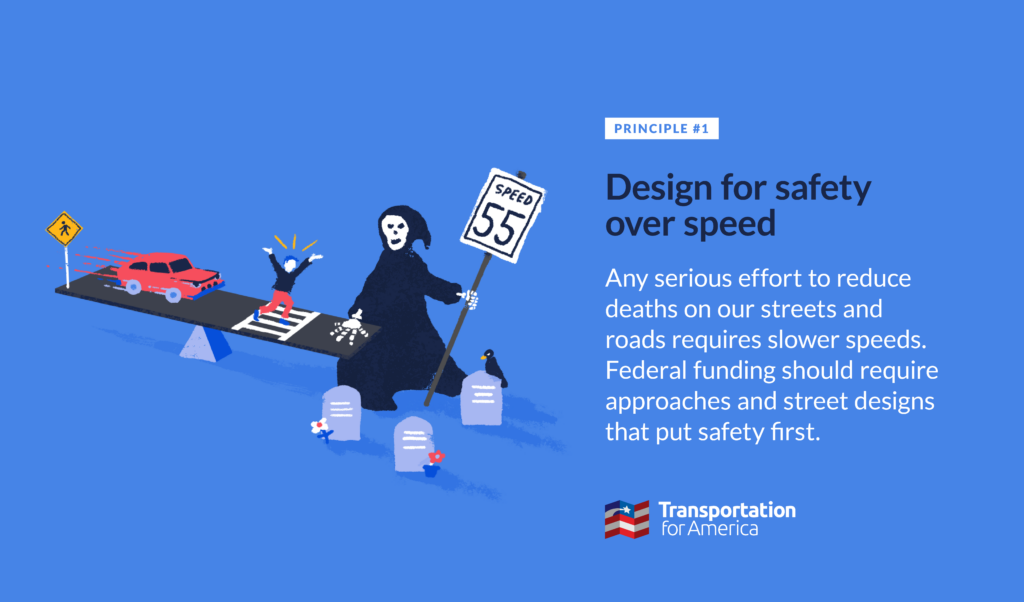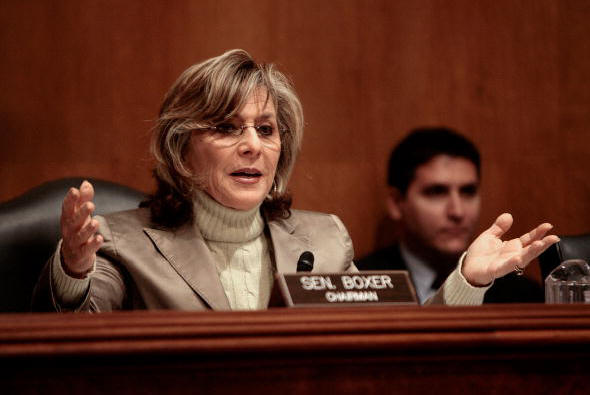
Lawmakers move to address pedestrian safety in the wake of Dangerous by Design
 Tuesday’s release of Dangerous by Design outlining the 47,700 deaths and 688,000 injuries to people while walking on unsafe streets has renewed Congress’ focus on pedestrian safety in the next transportation bill. But what substantial steps the House and Senate will take to promote safer streets and improve conditions for walking remains very much in play.
Tuesday’s release of Dangerous by Design outlining the 47,700 deaths and 688,000 injuries to people while walking on unsafe streets has renewed Congress’ focus on pedestrian safety in the next transportation bill. But what substantial steps the House and Senate will take to promote safer streets and improve conditions for walking remains very much in play.
As we point out in the report, federal dollars and/or design guidelines have contributed to the dangerous conditions on the roads where two-thirds of these people have died, so the federal government can’t now throw up their hands, pass the buck and declare the ongoing carnage “a local problem.”
Representative Shelley Moore Capito (right), a West Virginia Republican and member of the House Transportation and Infrastructure Committee, told the Charleston Daily Mail that she will “certainly remain a strong voice for making roads safer to pedestrians” while crafting the transportation bill. More than 200 people were killed while walking in West Virginia from 2000 to 2009, according to the report, at a cost of $1.02 billion, and the Charleston metro area had 56 of those fatalities. The entire state ranked 24th out of 50 states in overall danger to pedestrians.
Over in the Senate, the Environmental and Public Works Committee has been drafting their part of the bill and looking for points of agreement among the top four committee members from both parties. Many T4 partners from across the country have been communicating with EPW offices for the last several weeks urging the Senate to retain dedicated funding for making walking and biking safer, a key recommendation of Dangerous by Design 2011.
Sen. Boxer released a joint statement yesterday with her fellow Committee leaders from both parties on the broad principles they’ve agreed upon for the next transportation bill. (Read T4’s official response here.)
• Funds programs at current levels to maintain and modernize our critical transportation infrastructure;
• Eliminates earmarks;
• Consolidates numerous programs to focus resources on key national goals and reduce duplicative and wasteful programs;
• Consolidates numerous programs into a more focused freight program that will improve the movement of goods;
• Creates a new section called America Fast Forward, which strengthens the TIFIA program to stretch federal dollars further than they have been stretched before; and
• Expedites project delivery without sacrificing the environment or the rights of people to be heard

Boxer told reporters she supports federal efforts and funding for walking and biking. “Certainly any mode of transportation – roads that support alternatives such as bike paths, walkways – will be included and get good attention,” she said, according to Streetsblog Capitol Hill, though negotiations continue on all aspects of the bill not included in these core principles above.
California had 6,957 pedestrian deaths from 2000 to 2009, including 2,533 in the Los Angeles metropolitan area and 938 in the Riverside-San Bernardino metro area, which made the list of the top ten most dangerous metros at #5. California ranked 16th out of all 50 states, according to the report’s Pedestrian Danger Index for states.



